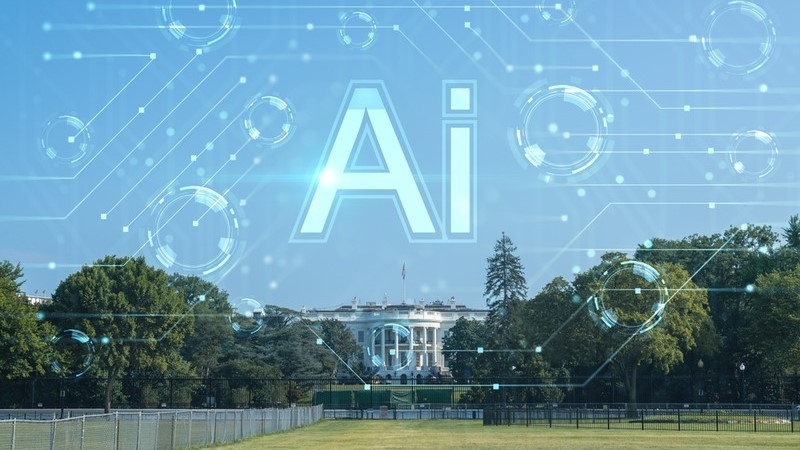
The Trump administration pledged Wednesday to bolster the power grid behind its new AI Action Plan, vowing to ease environmental permitting rules, boost existing supply, and accelerate electrical infrastructure development.
Specifically, the administration said it would take steps toward stabilizing the existing power grid, optimizing existing resources, building new generation capacity, and developing a strategic blueprint to guide all energy efforts to achieve long-term power adequacy for artificial intelligence.
This was in President Donald Trump’s AI Action Plan, which he had announced in the first weeks of his second administration earlier this year and later received thousands of public comments. The final product set the tone for the administration’s future moves regarding the technology, which the administration has long asserted has locked the nation into an “AI race” against China.
Chief among the 90 policies that the plan laid the groundwork for in the coming weeks and months is how the administration plans to stabilize and support the power needed to power its AI data centers – a concern that experts, Federal officials, and lawmakers have nodded to Department of Energy warnings that half of all new American electric power will be consumed by AI data centers by 2030.
“Like most general-purpose technologies of the past, AI will require new infrastructure— factories to produce chips, data centers to run those chips, and new sources of energy to power it all,” said the White House in its order. “America’s environmental permitting system and other regulations make it almost impossible to build this infrastructure in the United States with the speed that is required.”
“Fortunately, the Trump Administration has made unprecedented progress in reforming this system,” the order continued. “Now is the time to build on that momentum.”
Proposed policies to spur that momentum include new categorical exclusions under current regulations that allow data center development activities that don’t “have a significant effect on the environment,” and adopt other existing exclusions to accelerate that process.
Other environmental permitting changes include expedited permitting through streamlining or reducing regulations under various environmental protect acts and continuing to make Federal lands available for constructing data centers and related energy infrastructure.
AI itself could also be applied to accelerating and improving environmental reviews, the White House added, pointing to expanding agency participation in the Department of Energy’s “Permit AI Project.”
On the security end of things, the Trump administration put forth policy recommendations to prohibit adversaries from injecting harmful inputs into infrastructure, while using a domestic AI computing stack that only includes the use of American-made software and hardware.
Power resources will also expand under the action plan, with the White House noting that the power grid “will need to be upgraded to support data centers and other energy-intensive industries of the future.”
“The power grid is the lifeblood of the modern economy and a cornerstone of national security, but it is facing a confluence of challenges that demand strategic foresight and decisive action,” said the White House. “Escalating demand driven by electrification and the technological advancements of AI are increasing pressures on the grid.”
To do this, the administration said it would work to prevent “premature decommissioning of critical power generation resources” while innovating methods to “harness existing capacity,” which could include using backup power sources to boost grid reliability.
The AI Action Plan also proposed exploring advanced grid management technologies and power line upgrades, while investigating new ways for large power consumers to manage their power consumption during “critical grid periods.”
Zeroing in on nuclear fusion and fission and enhanced geothermal power sources is another priority under the plan, where the administration said it wants to “reform power markets to align financial incentives with the goal of grid stability.”
Nuclear energy has had a major push by Trump who signed a series of executive orders in May to accelerate nuclear energy development, specifically using nuclear reactors – such as small modular reactors – to provide power not susceptible to foreign threats or power grid failures, according to the administration.
More traditional sources of energy have also been touted as a solution by the Trump administration, after Trump also signed an order in April to identify regions where coal-powered infrastructure can support AI data centers, a move controversial among Democrats who have pushed for renewable solutions.
That energy will power what the Trump administration said will be “high-security AI data centers” that fall under new technical standards led by the Department of Defense, Intelligence Community, National Security Council, National Institute of Standards and Technology, and Center for AI Standards and Innovation in partnership with industry.
Those standards will also be supported with adoption of classified compute environments that will enable “scalable and secure workloads.”
“Because AI systems are particularly well-suited to processing raw intelligence data today, and because of the vastly expanded capabilities AI systems could have in the future, it is likely that AI will be used with some of the U.S. government’s most sensitive data,” said the White House. “The data centers where these models are deployed must be resistant to attacks by the most determined and capable nation-state actors.”
